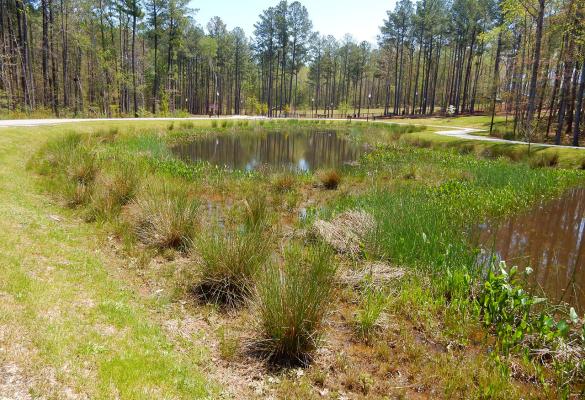Built Wetlands
Built wetlands, also known as constructed, artificial, or treatment wetlands, are water treatment systems built with wetland soils and vegetation to mimic the ecological and biophysical processes that improve water quality in natural wetlands (EPA 2023). They are generally shallow channels or ponds with wetland plants into which wastewater or stormwater is directed for treatment (EPA 2000). Built wetlands can be used to treat urban stormwater runoff as well as wastewater (Scholz 2015). They can remove a variety of pollutants including suspended solids, nitrogen, phosphorus, hydrocarbons, and metals (Gelt 1997).

Case Studies
Arlington Stormwater Wetland Park
Carmel River Restoration Project
Constructing Shallow Saline Habitat Ponds at the Salton Sea to Mitigate Contaminant Risks
Habitat Restoration Within the Middle Rio Grande of New Mexico
Harbor Brook Constructed Wetlands Pilot Treatment System
Harbor Brook Daylighting Project, Meriden, Connecticut
Increasing Water Availability for the Razorback Sucker on the Scott Matheson Wetland Preserve
Kino Environmental Restoration Project: Stormwater Use for Habitat in an Urban Environment
Mimbres River Habitat Restoration for the Chihuahua Chub and Chiricahua Leopard Frog
Steigerwald Reconnection Project
The Wild Mile Urban River Restoration
Tools
Green Infrastructure Effectiveness Database
Manual: Constructed Wetlands Treatment of Municipal Wastewaters
Mitigation Action Portfolio (MAP)
Mitigation Ideas: A Resource for Reducing Risk to Natural Hazards
Tools, Strategies and Lessons Learned from EPA Green Infrastructure Technical Assistance Projects
Likely Benefits and Outcomes
This strategy is likely to achieve these project goals. Click to search for strategies with a similar benefit.
Related Green (natured-based) vs. Gray infrastructure
In development.
